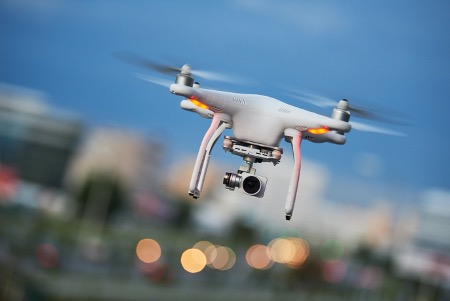Zurich, 30 September 2020
The increasing use of drones is likely to result in growing demand for insurance policies. However, the current lack of accident data makes it difficult for insurance companies to develop models. Dronesurance, an EIT Digital innovation initiative who partners with Achmea, Bright Cape, CWI, University Politecnica Madrid and Eurapco, aims to provide a simple yet flexible model using an archetype of Bayesian neural networks – also known as Bayesian generalised linear models – to predict the risk of drone accidents and the claim size
Drones are no longer purely recreational objects but essential business tools used for purposes from real estate photography to transportation of goods. The market demand for drones is expected to rise and with it increased drone usage and an associated demand for insurance of flights. Additionally, the regulator, the European Union Aviation Safety Agency (EASA), is advocating a per-flight insurance to cover damage that a drone may cause to a third party. For example, as of 1 July 2020, the guidelines issued by EASA stipulate a per-flight insurance any time a drone is used beyond the line of sight.
Insurance pricing is usually determined by a model that is based on a large pool of historical accident data, using the size and number of claims as a function (often non-linear) of the determining features. However, with drones being a recent innovation, insurance companies lack adequate data to design a full data-driven model. Data will likely arrive sequentially as more policies are developed and more flights occur. A model, therefore, needs to be able to handle existing information and expert judgements to partially make up for the initial lack of data and should adapt to new information as it becomes available.
To this end, Dronesurance adopted a flexible framework offered by Bayesian generalised linear models (BGLM). These models can be understood as simple Bayesian neural networks with no hidden layers that can design non-linear interactions between the features and the responses, while maintaining a fair degree of mathematical tractability and explainability.
Using interviews and questionnaires, the partners collected expert opinions in order to identify the features that are most likely to be relevant for the problem. Dronesurance embedded this information into their model.
Once data becomes available, the model is calibrated using a specially developed algorithm and scenarios are generated to predict the risk profile of a drone flight and the size of possible claims that could be generated.
In the early stages, it is likely that the model results will closely resemble the initial guesses formulated by the experts. However, over time, as more data becomes available, the model will be able to deviate from the initial guesses towards a data-driven explainable estimation by giving more and more weight to the empirical evidence.
The goal of the Dronesurance project is to build a simple but robust prediction model to study the risk embedded in drone flights. Together the Dronesurance partners have developed an application for per-flight drone insurance with the following features:
- Stand-alone insurance (rather than incorporated in household or liability insurance)
- Pay-as-you-fly
- Plug-and-play
- Includes weather and geographical data
- Both for recreational and professional use
From September onwards, Eurapco will organise demos of Dronesurance with the Eurapco Private Lines and Innovation Groups.
Frederik Fernhout
Head of Business Development, Eurapco




